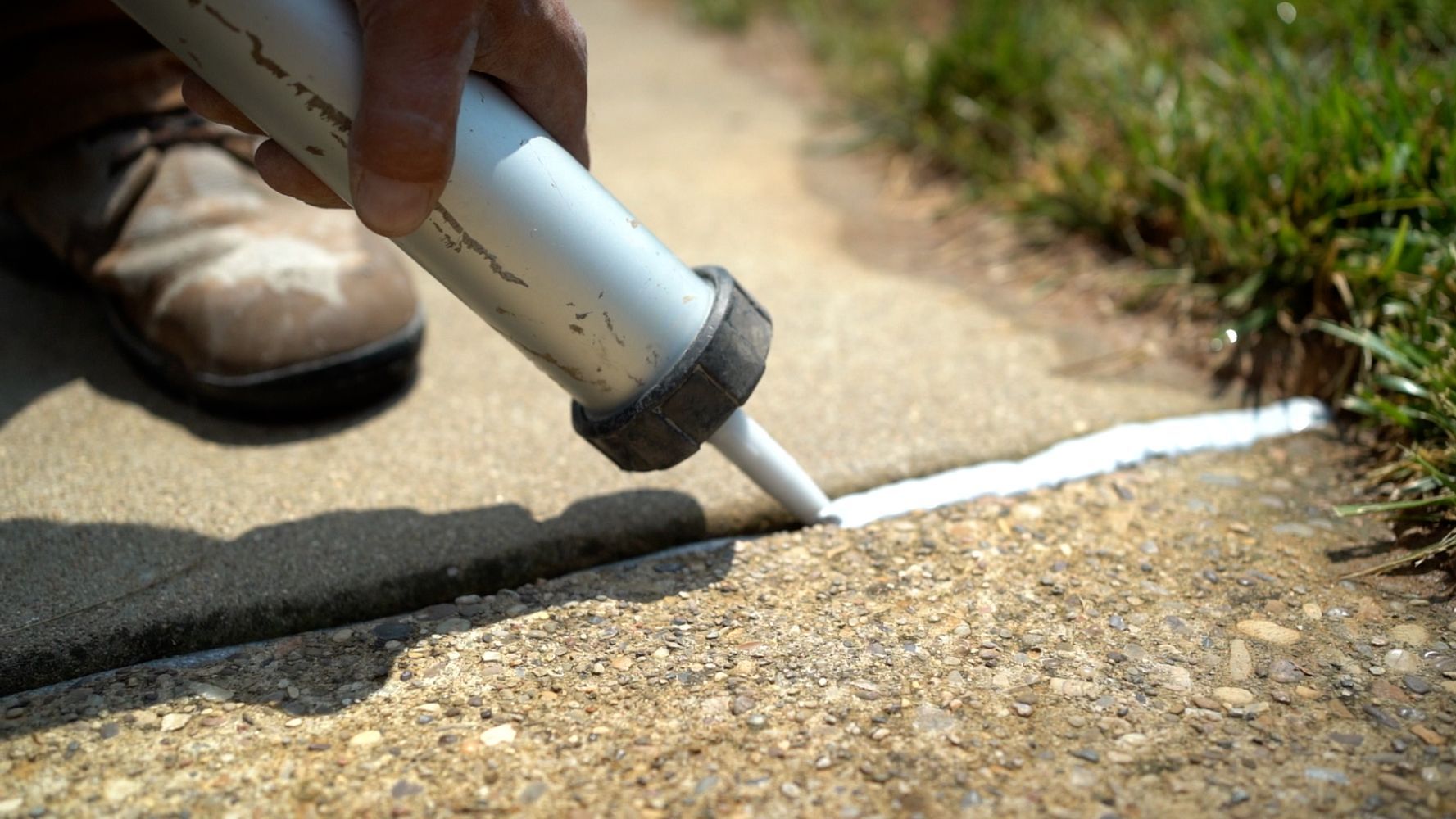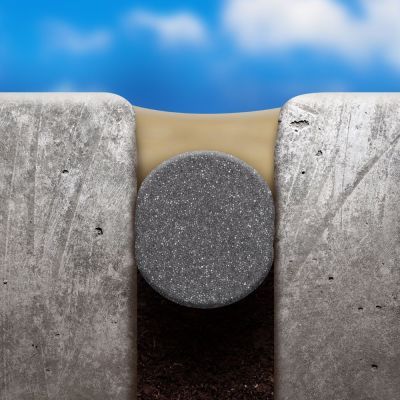Topics:
Search for topics or resources
Enter your search below and hit enter or click the search icon.
Providing your email address will keep you updated should we need to provide updates specific to your location.
September 2nd, 2025 | 4 min. read
By Sarah Etler

Concrete driveways take a beating — between vehicles, weather, and seasonal freeze-thaw cycles, it’s only a matter of time before cracks start to show.
The good news? With the right tools, materials, and patience, repairing driveway cracks is a manageable DIY project that can extend the life of your concrete and keep it looking its best.
TL;DR
To repair cracks in your driveway: clean the crack, insert backer rod (for deep or wide cracks), apply flexible polyurethane caulk, smooth it with soapy water, sprinkle sand for texture, and allow it to cure. Avoid rigid patching materials, and level the slab first if it’s uneven.
In This Article
Before you start, gather the right materials. Proper prep makes the difference between a quick patch and a long-lasting repair.
Use flexible polyurethane caulk designed for concrete. Here are the two options:
Pro brands: Chemlink, Sika.
Remove dirt, weeds, and debris from the crack. Use a pressure washer or leaf blower for best results. Let the concrete dry completely before caulking.
Important: If your driveway slab is uneven, lift and level it before caulking (so you don’t stretch the caulk and ruin the repair later).

For cracks wider than ½ inch:
You can also use playground sand. Fill the crack with sand until all voids are filled, tapping the concrete gently with a 2x4 to distribute evenly.
Pro Tip: The caulk should be slightly lower than the surface of the slab to protect the bead from damage from foot or vehicle traffic.

Sprinkle dry sand over wet caulk to help visually blend it in with the driveway.
Sprinkle dry sand over wet caulk to help visually blend it in with the driveway.Rigid fillers don’t flex with slab movement and will crack again.
Always lift uneven slabs before sealing cracks. Otherwise, you risk ruining the caulk line if lifting is required.
For wide expansion joints: dam edges with non-sag, then fill with self-leveling for a clean finish.
Adding colored sand to the caulk surface while wet creates a natural, concrete-like look that helps it blend in.
While repairing driveway cracks is DIY-friendly, there are times when calling in the pros makes sense:
At A-1 Concrete Leveling, our crews specialize in caulking and concrete leveling to keep driveways protected and looking great for years. Request a free onsite estimate today.
Cracks won’t fix themselves — and the longer you wait, the more they can expand and cause settlement issues. With this step-by-step guide, you can tackle driveway crack repair as a weekend DIY project.
Prefer a professional finish? A-1 Concrete Leveling has over 30 years of experience repairing and protecting concrete with expert leveling, caulking, cleaning, and sealing services.
Request a free estimate and get your driveway back in shape.
The best method to repair concrete cracks is to clean the crack, insert backer rod if needed, and fill with a flexible polyurethane concrete caulk. This keeps water out and allows for natural slab movement.
No, you shouldn’t use concrete patch to fill driveway cracks. Patching compounds and mortar are rigid and will crack again as the slab expands and contracts.
With good prep and flexible caulk, repairs can last several years. Check yearly and touch up as needed.
Yes, it’s important to first lift the concrete before caulking if the slab is uneven. Leveling first ensures your caulk won’t come unstuck when the concrete is lifted.
Sarah Etler joined A-1 Concrete Leveling after receiving her Bachelor of Arts degree in English from Northern Kentucky University. As A-1's Content Marketing Manager, she works closely with industry experts to produce content that will best answer questions related to concrete repair and maintenance practices. Sarah loves living a life full of discovery and is excited every day to see what new things she can learn and share with those around her.
Topics: